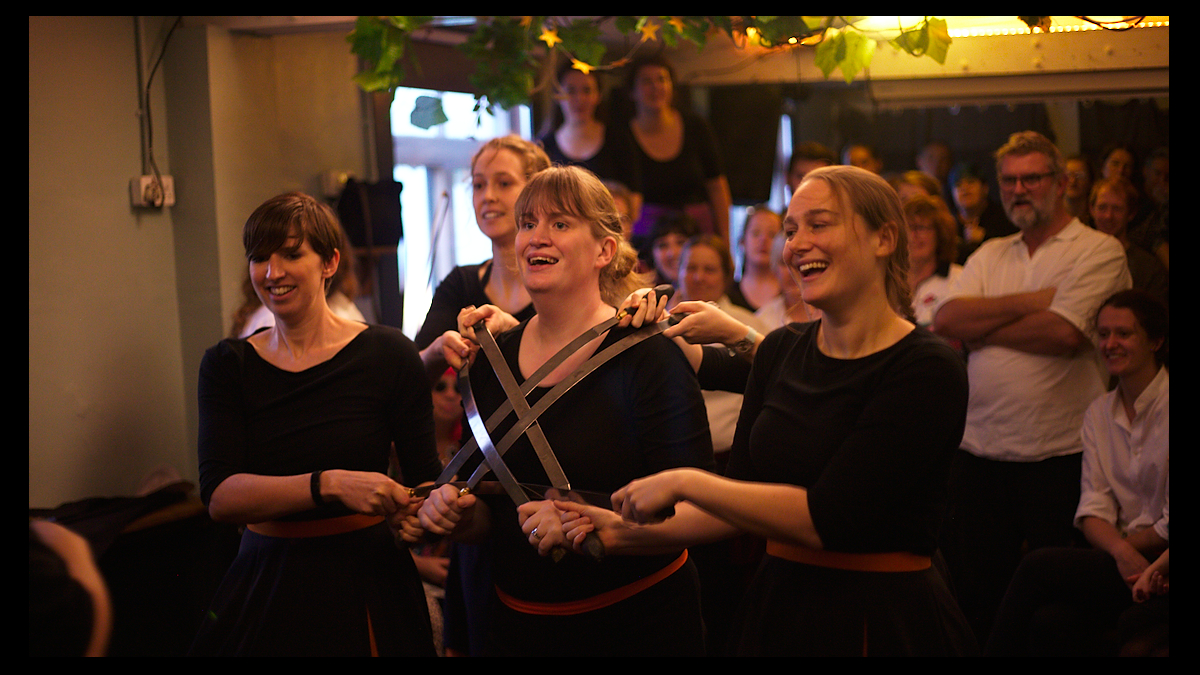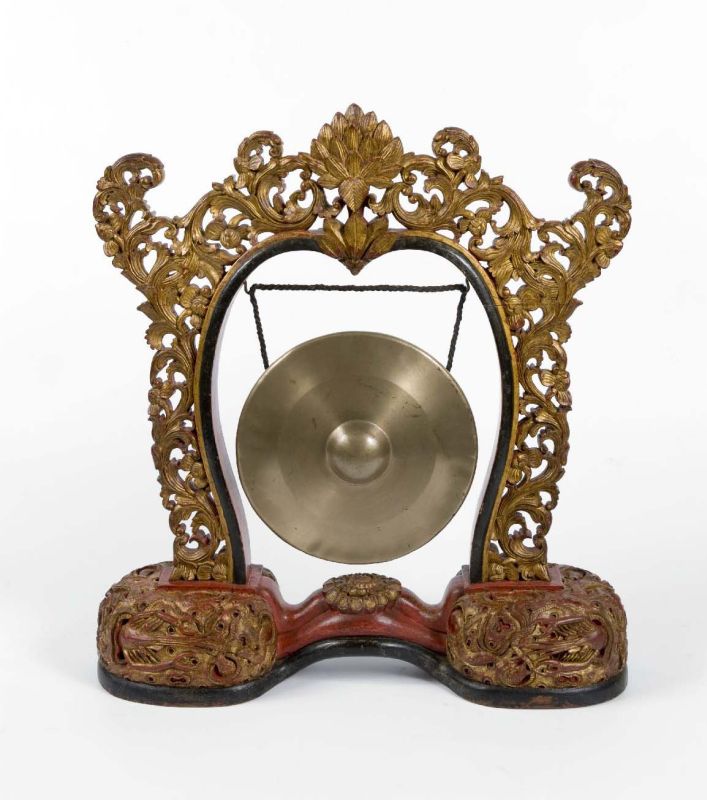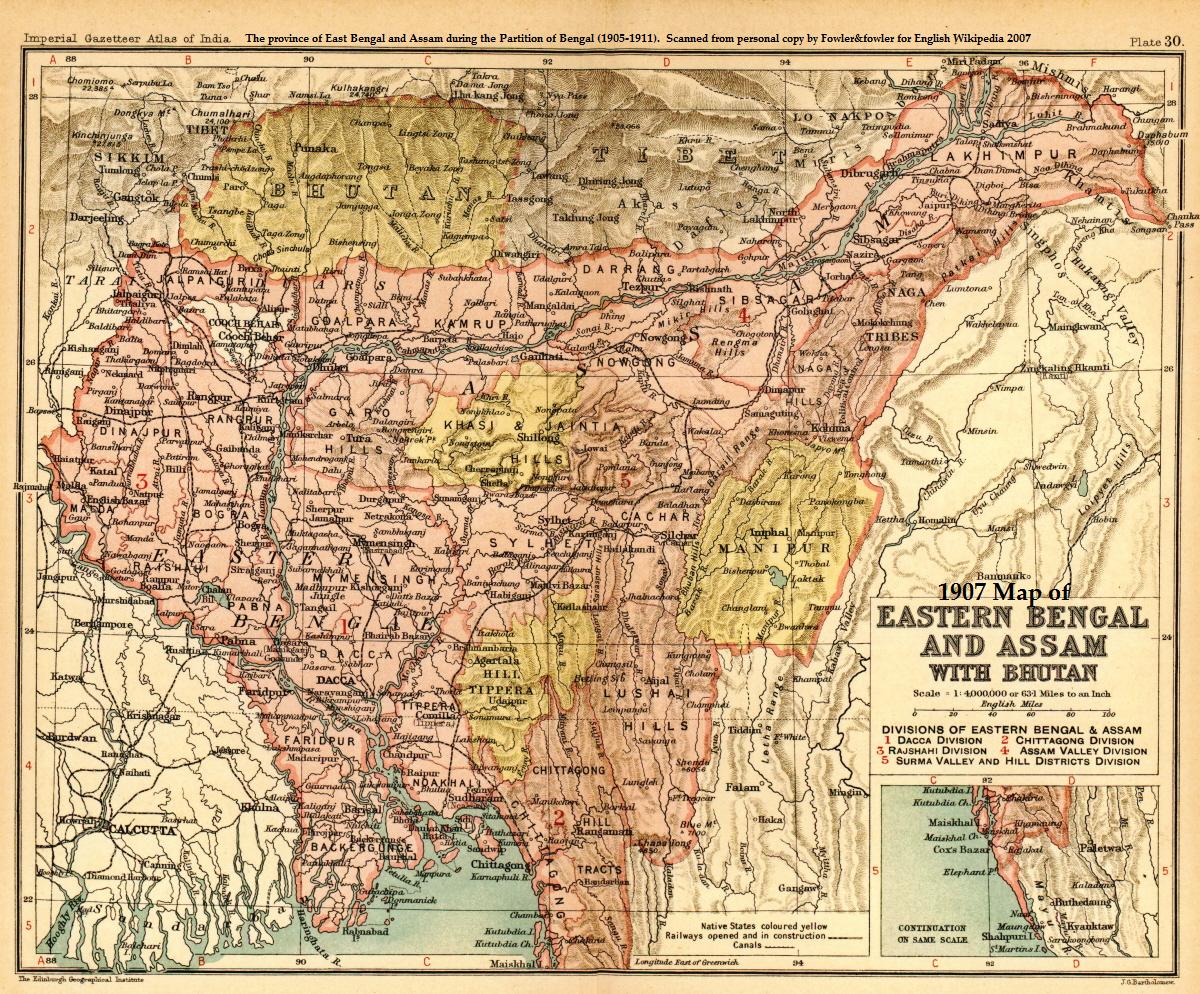|
Khual Lam
Khual Lam is a Mizo traditional dance from the Indian state of Mizoram that is performed for guests. Nowadays, it is performed in every major Mizo cultural festival but still maintains the tradition of performing for guests such as the state Chief Minister, or government officials. Performance Costume Female dancers wear ''Puandum'', which is a handwoven big black shawl striped in red, yellow, and green. The ''Puandum'' is draped over the shoulders of the females. The size of the stripes may vary. Male dancers wear ''Ngotekherh'', a traditional big white shawl with black patterns with and black and white stripes. The black patterns may vary from square patterns to stripes. It is also draped over the shoulders of the males. Choreography For the first part of a typical Khual Lam dance, dancers extend an arm while taking a step forward and retract the arm back to sway their shawls and do the same for the other arm and leg. The second part of the dance is where a male and female fa ... [...More Info...] [...Related Items...] OR: [Wikipedia] [Google] [Baidu] |
Aizawl
Aizawl (, American English, US: , British English, UK: ; Mizo language, Mizo: ), formerly known as Aijal, is the capital city and the most populous city of Mizoram, India. It is also the third largest city in northeast India. It is situated atop a series of ridges, with an average elevation of around 1,132 metres (3,714 feet) above sea level. In 2024, the city has an estimated population of 415,000 people. Having served as the capital of the British rule in the Lushai Hills, British Lushai Hills from 1898 to 1947, colonial structures are prevalent in the city centre including but not limited to the Aijal Club, Raj Bhavan, Aizawl, Raj Bhavan, the Government Aizawl College, Red School, and the District magistrate, Office of the Deputy Commissioner. As the seat of the Government of Mizoram, Aizawl is home to the Mizoram Legislative Assembly, Assembly House. Additionally, Aizawl is part of the Smart Cities Mission, an initiative by the Ministry of Housing and Urban Affairs aimed at ... [...More Info...] [...Related Items...] OR: [Wikipedia] [Google] [Baidu] |
Chapchar Kut
The Chapchar Kut is a festival of Mizoram, India. Origins and history Chapchar Kut is estimated to have started in 1450–1700 A.D. in a village called Suaipui. The festival apparently originated when the hunters came back to the village empty handed, to make up for the disappointment, the Village chief proposed an impromptu feast with rice beer and meat. Since then, every year the festival had been repeated by the village of Suaipui and spread on to other villages. Chapchar Kut was first revived in 1962 on a grand scale in Aizawl, however it was discouraged when it was felt that it did not adhere to Christian A Christian () is a person who follows or adheres to Christianity, a Monotheism, monotheistic Abrahamic religion based on the life and teachings of Jesus in Christianity, Jesus Christ. Christians form the largest religious community in the wo ... values and rekindling the pre Christian cultural practices like drinking of rice beer, however, it was continued in 197 ... [...More Info...] [...Related Items...] OR: [Wikipedia] [Google] [Baidu] |
Folk Dance
A folk dance is a dance that reflects the life of the people of a certain country or region. Not all ethnic dances are folk dances. For example, Ritual, ritual dances or dances of ritual origin are not considered to be folk dances. Ritual dances are usually called "religious dances" because of their purpose. The terms "ethnic" and "traditional" are used when it is required to emphasize the cultural roots of the dance. In this sense, nearly all folk dances are ethnic ones. If some dances, such as polka, cross ethnic boundaries and even cross the boundary between "folk" and "ballroom dance", ethnic differences are often considerable enough to mention. Background Folk dances share some or all of the following attributes: *Dances are usually held at folk dance gatherings or social functions by people with little or no professional training, often to traditional music. *Dances not generally designed for public performance or the stage, though they may later be arranged and set for ... [...More Info...] [...Related Items...] OR: [Wikipedia] [Google] [Baidu] |
Mizo People
The Mizo people, historically called the Lushais, are a Tibeto-Burman ethnic group primarily from Mizoram in northeastern India. They speak Mizo, one of the state's official languages and its lingua franca. Beyond Mizoram, sizable Mizo communities live in neighboring northeast Indian states like Manipur, Assam, Meghalaya, and Tripura, with minority populations also found in Myanmar and the United States. Mizoram is the most literate state in India, and the first to reach 100%. The Chin people of Myanmar and the Kuki people of India and Bangladesh are the kindred tribes of Mizos and many of the Mizo migrants in Myanmar have accepted the Chin identity. The Chin, Kuki, Mizo, and southern Naga peoples are collectively known as Zo people ( Mizo: ''Zohnahthlak''; lit. "descendants of Zo") which all speak the Mizo language Definition and subgroups The term "Mizo" is a collective name for the people inhabiting the State of Mizoram who have close affinity in dialect, origin ... [...More Info...] [...Related Items...] OR: [Wikipedia] [Google] [Baidu] |
Mizoram
Mizoram is a states and union territories of India, state in northeastern India, with Aizawl as its Capital city, capital and largest city. It shares 722-kilometres (449 miles) of international borders with Bangladesh to the west, and Myanmar to the east and south, with domestic borders with the Indian states of Assam, Manipur, and Tripura. It covers an area of 21,087 square kilometres (8,139 sq mi). 91% of the area is covered by forests, making it Forest cover by state in India, the most heavily forested state in India. With an estimated population of 1.25 million in 2023, it is the List of states in India by past population, second least populated state in India. With an urbanisation rate of 51.5% it is the Urbanization in India, most urbanised state in northeast India, ranking fifth in urbanisation nationwide. One of the two official languages and most widely spoken tongue is Mizo language, Mizo, which serves as a lingua franca among various ethnic communities who speak a var ... [...More Info...] [...Related Items...] OR: [Wikipedia] [Google] [Baidu] |
List Of Chief Ministers Of Mizoram
The chief minister of Mizoram is the chief executive of the Indian state of Mizoram. As per the Constitution of India, the governor is a state's ''de jure'' head, but '' de facto'' executive authority rests with the chief minister. Following elections to the Mizoram Legislative Assembly, the state's governor usually invites the party (or coalition) with a majority of seats to form the government. The governor appoints the chief minister, whose council of ministers are collectively responsible to the assembly. Given that he has the confidence of the assembly, the chief minister's term is for five years and is subject to no term limits.Durga Das Basu. ''Introduction to the Constitution of India''. 1960. 20th Edition, 2011 Reprint. pp. 241, 245. LexisNexis Butterworths Wadhwa Nagpur. . Note: although the text talks about Indian state governments in general, it applies for the specific case of Mizoram as well. Since 1972, five people from four parties have served as chief minister ... [...More Info...] [...Related Items...] OR: [Wikipedia] [Google] [Baidu] |
Government Of Mizoram
The Government of Mizoram ( Mizo: Mizoram Sawrkâr) also known as the State Government of Mizoram, or locally as State Government, is the supreme governing authority of the Indian state of Mizoram and its 11 districts. It consists of an executive, led by the Governor of Mizoram, a judiciary and a legislative branch. Like other states of India, the head of the state of Mizoram is the Governor, appointed by the President of India on the advice of the Central government. The Chief Minister is the head of the government. Aizawl is the capital of Mizoram, and houses the Mizoram Legislative Assembly and the secretariat. The Gauhati High Court, located in Guwahati, Assam has an Aizawl Bench that exercises the jurisdiction and powers in respect of cases arising in the State of Mizoram. The present Legislative Assembly of Mizoram is unicameral, consisting of 40 Member of the Legislative Assembly (M.L.A). Its term is 5 years, unless sooner dissolved. Council of Ministers See al ... [...More Info...] [...Related Items...] OR: [Wikipedia] [Google] [Baidu] |
A Group Of Dancers From Mizoram Performing "Khuallam" Dance At The Republic Day Folk Dance Festival 2004 Which Was Inaugurated By The President Dr
A, or a, is the first letter and the first vowel letter of the Latin alphabet, used in the modern English alphabet, and others worldwide. Its name in English is '' a'' (pronounced ), plural ''aes''. It is similar in shape to the Ancient Greek letter alpha, from which it derives. The uppercase version consists of the two slanting sides of a triangle, crossed in the middle by a horizontal bar. The lowercase version is often written in one of two forms: the double-storey and single-storey . The latter is commonly used in handwriting and fonts based on it, especially fonts intended to be read by children, and is also found in italic type. In English, '' a'' is the indefinite article, with the alternative form ''an''. Name In English, the name of the letter is the ''long A'' sound, pronounced . Its name in most other languages matches the letter's pronunciation in open syllables. History The earliest known ancestor of A is ''aleph''—the first letter of the Phoenician ... [...More Info...] [...Related Items...] OR: [Wikipedia] [Google] [Baidu] |
Gong
A gongFrom Indonesian language, Indonesian and ; ; zh, c=鑼, p=luó; ; ; ; ; is a percussion instrument originating from Southeast Asia, and used widely in Southeast Asian and East Asian musical traditions. Gongs are made of metal and are circular and flat or bowl-like in shape, and can come in various sizes. They are typically struck with a mallet. They can be played alone, giving a characteristic "crashing" sound, or played as part of a tuned set that produce bell-like sounds. The earliest possible depictions of gongs is from the details on the surface of the Ngọc Lũ I Dong son drum, bronze drum () from the Dong Son culture of northern Vietnam. It depicts what looks like seven-gong ensembles along with other instruments (including cymbals/bells and the bronze drums themselves). The oldest undisputed historical mention of gongs can be found in sixth century AD Chinese records, which mentioned it as a foreign instrument that came from a country between Tibet and Bur ... [...More Info...] [...Related Items...] OR: [Wikipedia] [Google] [Baidu] |
Mizo Language
Mizo is a Tibeto-Burman language spoken mainly in the Indian state of Mizoram, where it is the official language and lingua franca. It is the mother tongue of the Mizo people and some members of the Mizo diaspora. Other than Mizoram, it is also spoken in Meghalaya, Manipur, Tripura, and Assam states of India, Sagaing Region and Chin State in Myanmar, and Chittagong Hill Tracts of Bangladesh. It is mainly based on the Lusei dialect but it has also derived many words from its surrounding Mizo clans such as Hmar, Pawi, etc. The language is also known as Duhlian and Lushai, a colonial term, as the Duhlian people were the first among the Mizo people to be encountered by the British in the course of their colonial expansion. Classification Mizo is related to the other languages of the Sino-Tibetan language family. The Zohnahtlak languages (which native Mizo speakers call ''Zohnahthlâk ṭawngho''/''Mizo ṭawngho'') have a substantial number of words in common. Phonology ... [...More Info...] [...Related Items...] OR: [Wikipedia] [Google] [Baidu] |
British Rule In The Lushai Hills
British rule in the Lushai Hills, spanning from the late 1889 to the 1947, commenced with the Chin-Lushai Expedition of 1889-90, Chin-Lushai Expedition of 1889–90 leading to the formal establishment of the two administrative districts (North Lushai Hills, South Lushai Hills) in 1889 and continued through the integration of the regions into the Assam Province, province of Assam with both districts being merged as the Lushai Hills until Indian independence movement, India gained independence in 1947. After the Chin-Lushai Expedition of 1889-90, Chin–Lushai Expedition of 1889–90, South Lushai Hills was occupied in 1889, and the following year, it was formally annexed, becoming part of Bengal Presidency. North Lushai Hills was also occupied in 1889 and became part of Colonial Assam, British Assam. In 1889, the two districts merged and continued to be part of British Assam. In 1912, it was put into British India's Assam Province. Etymology The Lushai hills are named after the L ... [...More Info...] [...Related Items...] OR: [Wikipedia] [Google] [Baidu] |
Pialral
Pialrâl () is the ultimate heaven according to the folk myth of the Mizo tribes of Northeast India. The Mizo word literally means "beyond the world". Unlike most concepts of heaven, it is not the final resting place of the spirits of the good and the righteous, nor is there a role for god or any supernaturals; it is simply a reservation for extraordinary achievers during their lifetime to enjoy eternal bliss and luxury. The concept of ''Pialrâl'' itself sums up very well the entire spiritual belief system in the animistic folk religion of the Mizo ancestors. It encompasses not only the spiritual realm, but also all the pathways for entry and services required to attain access. Although the traditional Mizo religion had been completely overshadowed by Christianity since the turn of the 20th century, the notion of ''Pialrâl'' still survives as a remnant in a Christian metaphor of paradise among modern Mizos, especially vivid in their songs of praise. Theosophy The Mizo anc ... [...More Info...] [...Related Items...] OR: [Wikipedia] [Google] [Baidu] |





